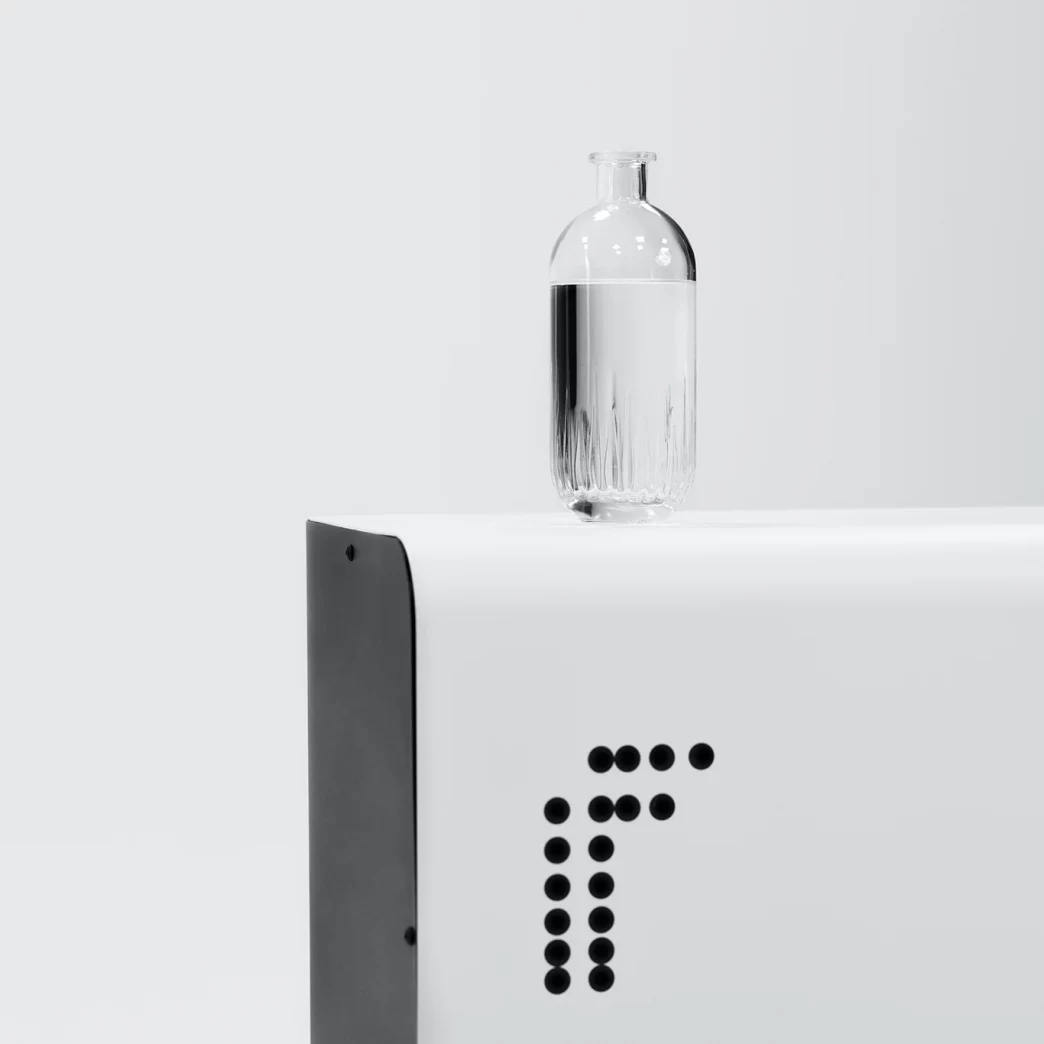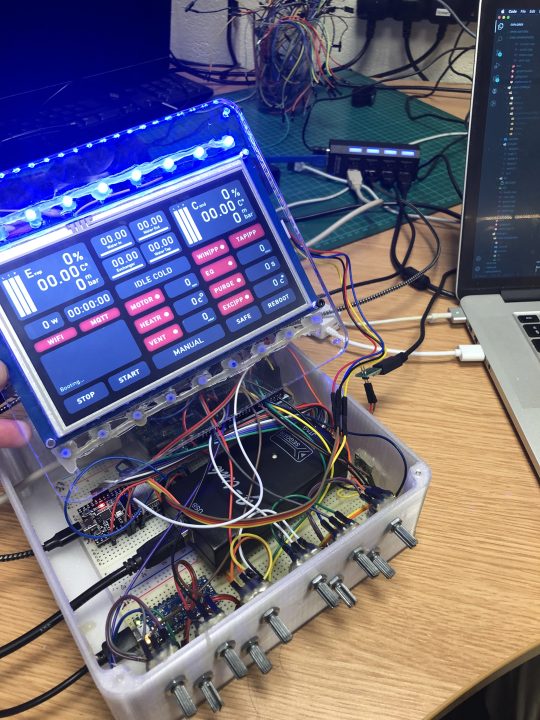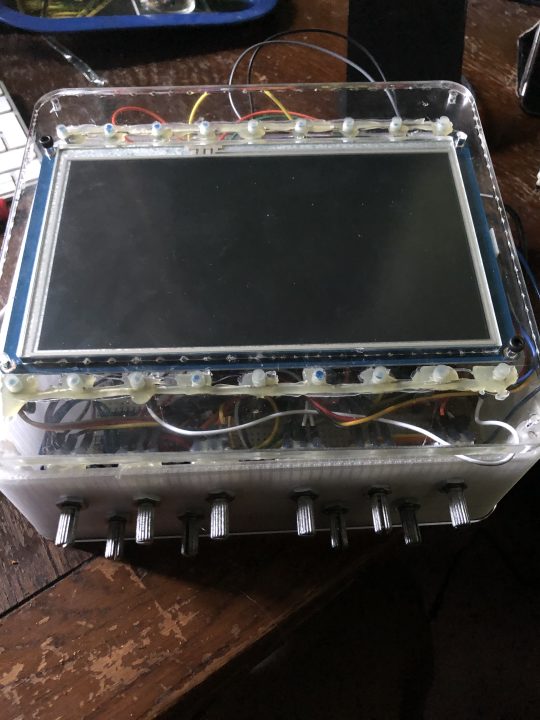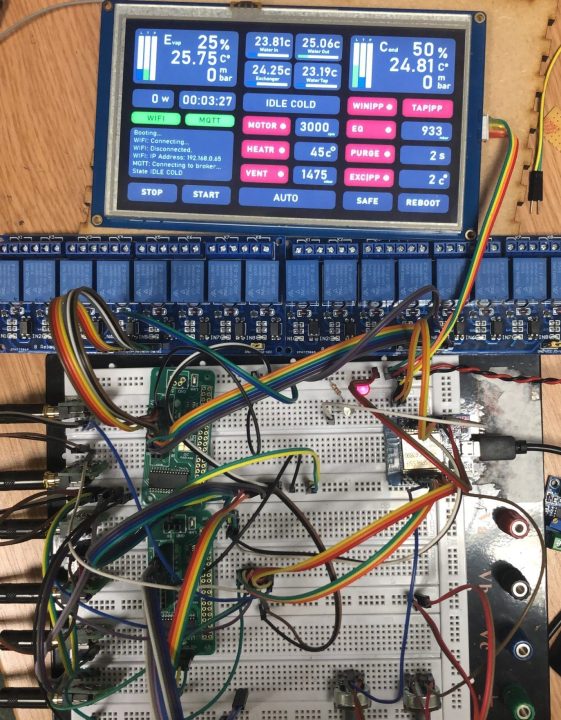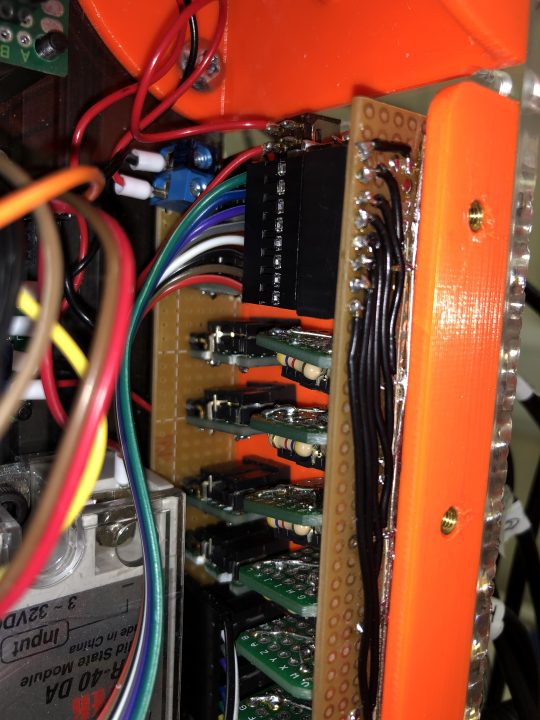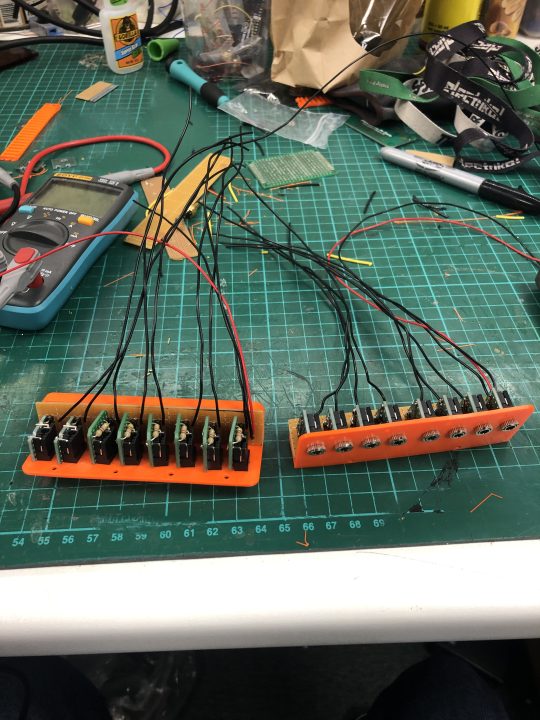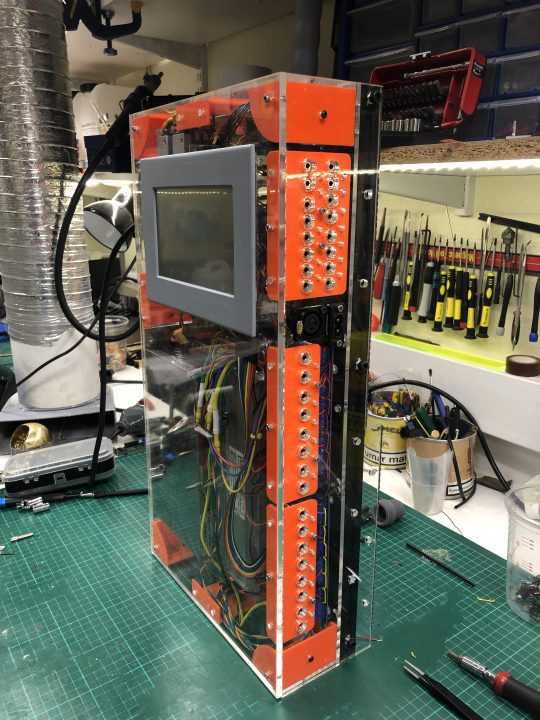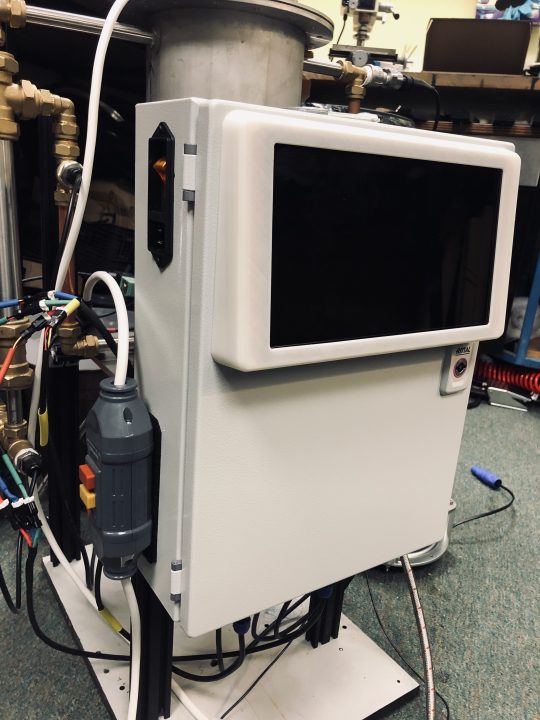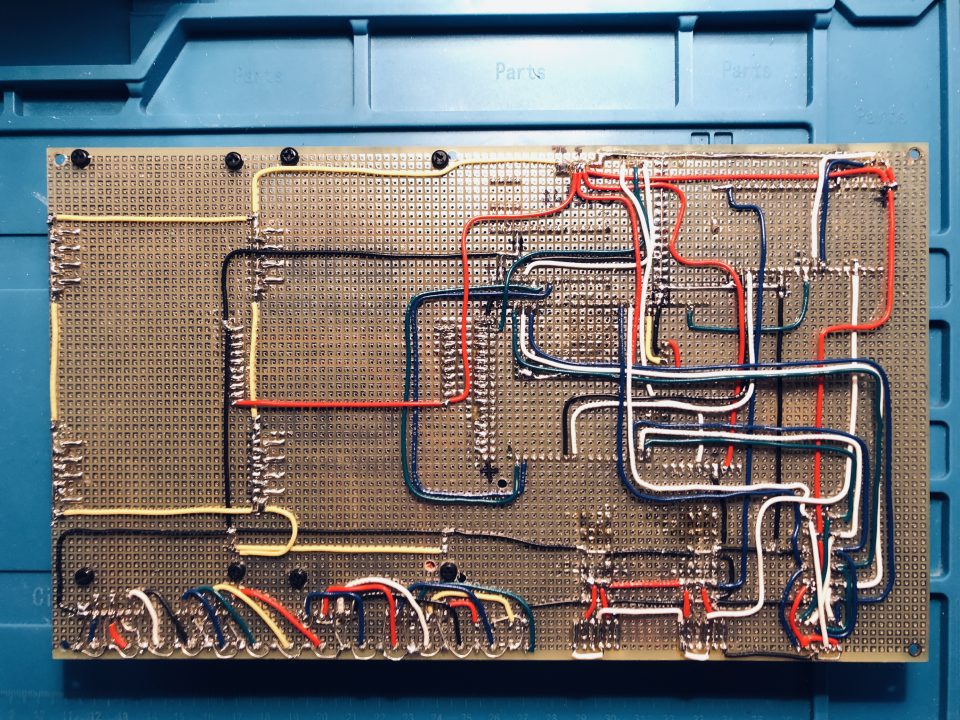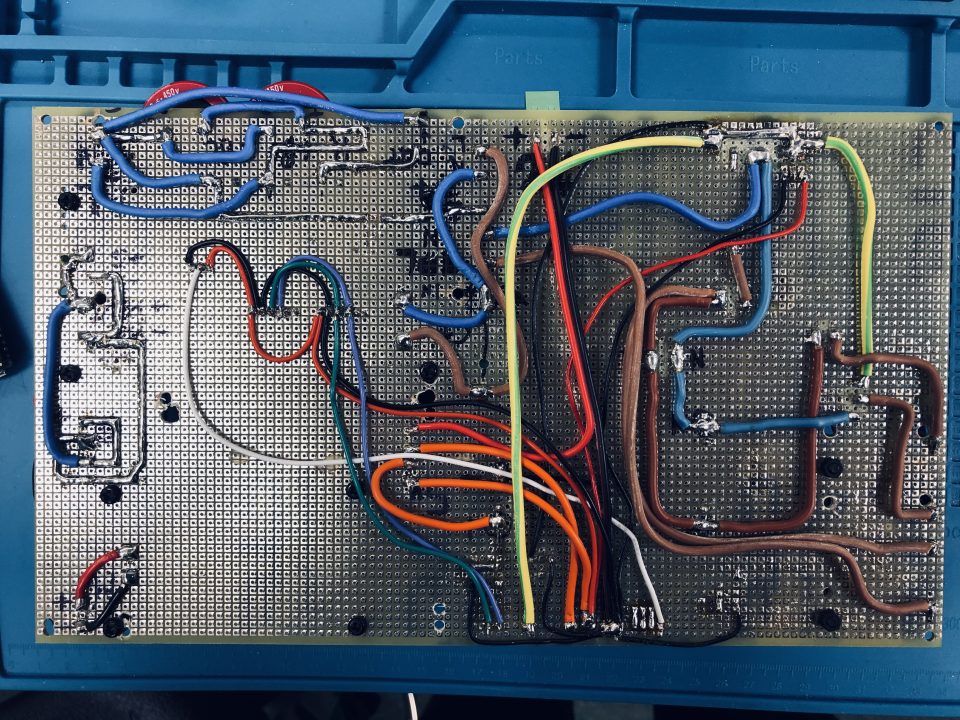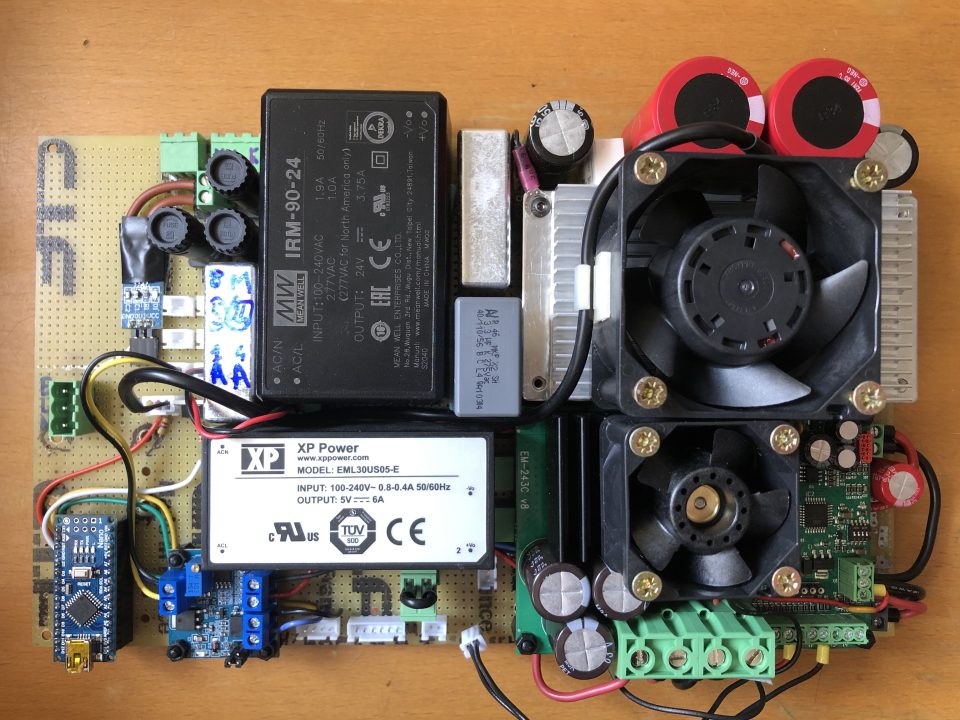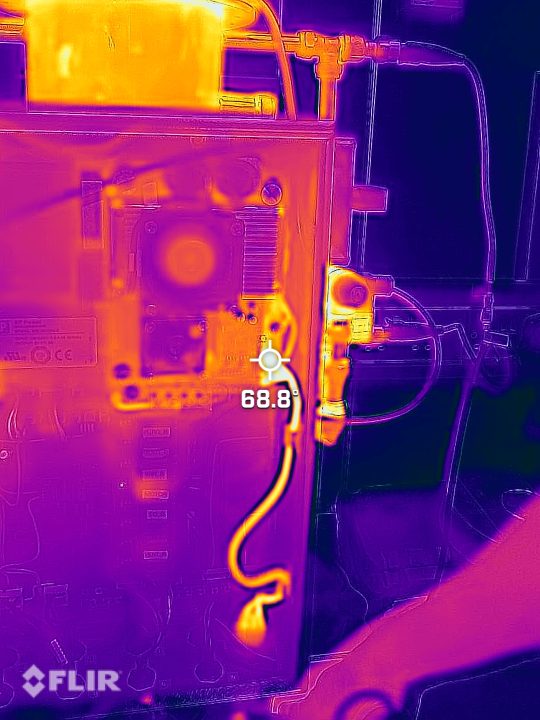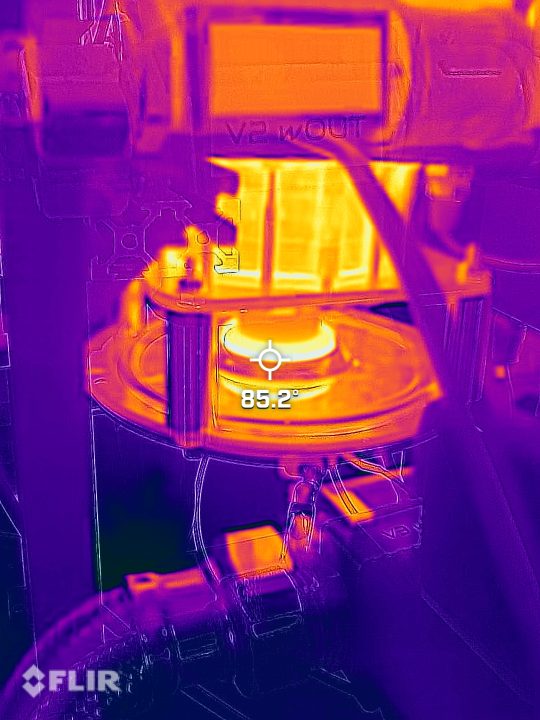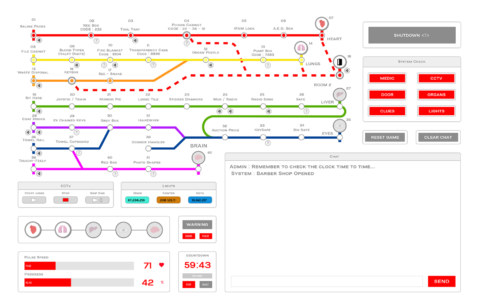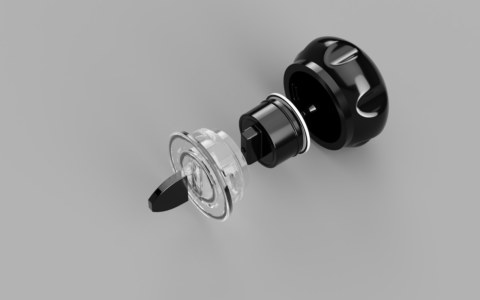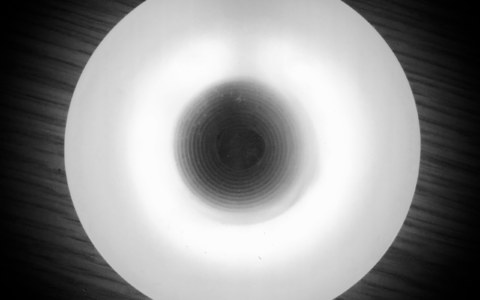Alembic Distillation
Alembic Distillation
IF, a local startup, have a long term mission to increase access to high quality water all around the world, and reduce the growing reliance on bottled water. MagicMods was contracted for the first phase of development and prototyping for :
- Electronics.
- Firmware.
- User interface.
- Data monitoring.
The mission : deliver a flexible, quickly adaptable and finely tuneable system to give the team the tools needed to reach their technology research and development goals.
Dev Kit
The best decision made in terms of prototyping strategy was to develop a portable Firmware/UI dev kit early on. A simple box containing the same microprocessors with debugger, same touch screen, same addresses etc but instead of reading/controlling actual hardware, sensors and actuators are replaced by potentiometers and LEDs.
An abstraction layer for input and output is enough to create a sandbox system that can be stressed without consequences, highlighting bugs or peculiar conditions otherwise difficult to reproduce in test/production. Being able to manually change input/output values without hardware connections can help to develop an operator support framework by creating impossible conditions indirectly indicting potential system faults.
Doing so made the firmware Ui and data monitoring development/test workflow very practical. Especially for the UI and data motoring where you can simulate on the fly all the possible conditions.
User Interface
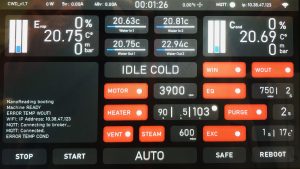 The Ui played an important role in the development process. It allowed hands on control and fine tuning for the hardware development. The whole user interface was dropped for the commercial product maximizing ease of use.
The Ui played an important role in the development process. It allowed hands on control and fine tuning for the hardware development. The whole user interface was dropped for the commercial product maximizing ease of use.
At the time, the most straightforward option was the use of Nextion HMI standalone displays and their IDE but now use exclusively SquareLine studio for all Ui work. It shows great potential and likely to become a reference tool for Ui design at an affordable price bracket.
Tip : It is not always practical to flash a serial device on an integrated system but, since it should be connected to microcontroller’s secondary serial port, you can flash the microcontroller with a simple firmware copying data from Serial1 to Serial2. That way, you can flash the screen with IDE directly connected to the microcontroller’s usb port.
This method has worked on other serial devices. Download FlashToSerial.ino
Data Monitoring
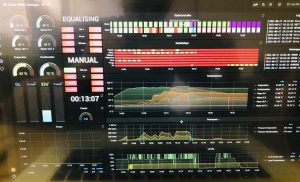
Data monitoring has an important part to play in the development. Presentation of those data needed to be clear and easy to navigate. A full-stack solution was developed using the following tools :
- Linux server running Docker
- Mosquito and MQTT for communication
- Node-RED for events
- InfluxDB for Time Series database
- Grafana for Monitoring and remote control
This setup has become favourite of mine for slow rate data monitoring.
Flexibility
An other aspect important to maintain was flexibility.
As the mechanical side evolves, being able add/remove sensors/actuators easily or detach the controller housing from the machine was key for rapid prototyping.
For the first controller version, we opted for audio stereo jack connectors (power, ground, signal). Unusual perhaps but given the characteristics required and the cost, it just made sense at this point of development. Very practical, especially during early development phases were the mechanical side could change drastically. A trick I will use again.
For the second version, connectors were upgraded to WEIPU SP13 for industrial environment suitability along with a complete new enclosure.
The ugly of prototyping
I think this is one of the best illustration of prototyping for people unware of the prototyping phases a product goes throu. In this phase, the goal is too get the electronic and firmware working as fast as possible to test and improve the hardware by “hacking” things together. Once satisfied with the results, the system will be locked down marking the next phase of the project.
As a self-confessed perfectionist, it makes me uncomfortable to look at it but I find solace knowing it is just temporary and part of the process.
Infrared
An infrared camera is not I believe the first thing that comes to mind when it comes to engineering tools. But I think it is terribly underrated (not unlike the hot glue gun…). I have often found myself thinking “why didn’t I think of giving a quick look at it with the IR camera? Could have save some time…”. On many occasions, it came only second to the multi-meter.
Whether is it to fix, design or maintain, it can reveal issues faster than any other methods. If you have a short somewhere, it will likely shine like a Christmas tree. Of course, that is not always the case but making an habit of using it will save you tones of time!
In that instance, it was very helpful for many aspects of the project, pcb layout, enclosure airflow, cable management, electrical and mechanical survey, maintenance, you name it.
I think this careful investment to make. IR cameras have become much more affordable in recent years but you get what you pay for. Ergonomy, performance and ease of use will make it easier to pick up without second thought. If it take time to setup, to warm up and results are not clear enough, it will just accumulate dust on the shelve…
I have used the FLIR ONE PRO series. Could not recommend enough. Even tough it works with a smartphone (would prefer a one piece equipment but given the cost, it is a good compromise). I also have successfully changed batteries on two different models without too much trouble which is good for long term investment. Only bemol was the change from lightning to usb-c port for iOS. They came up with a new wireless model called EDGE (for compatibility >= iphone15) which will likely be my next purchase. If you are interested to purchase on yourself, I would recommend PRO models only because of the thermal resolution.

